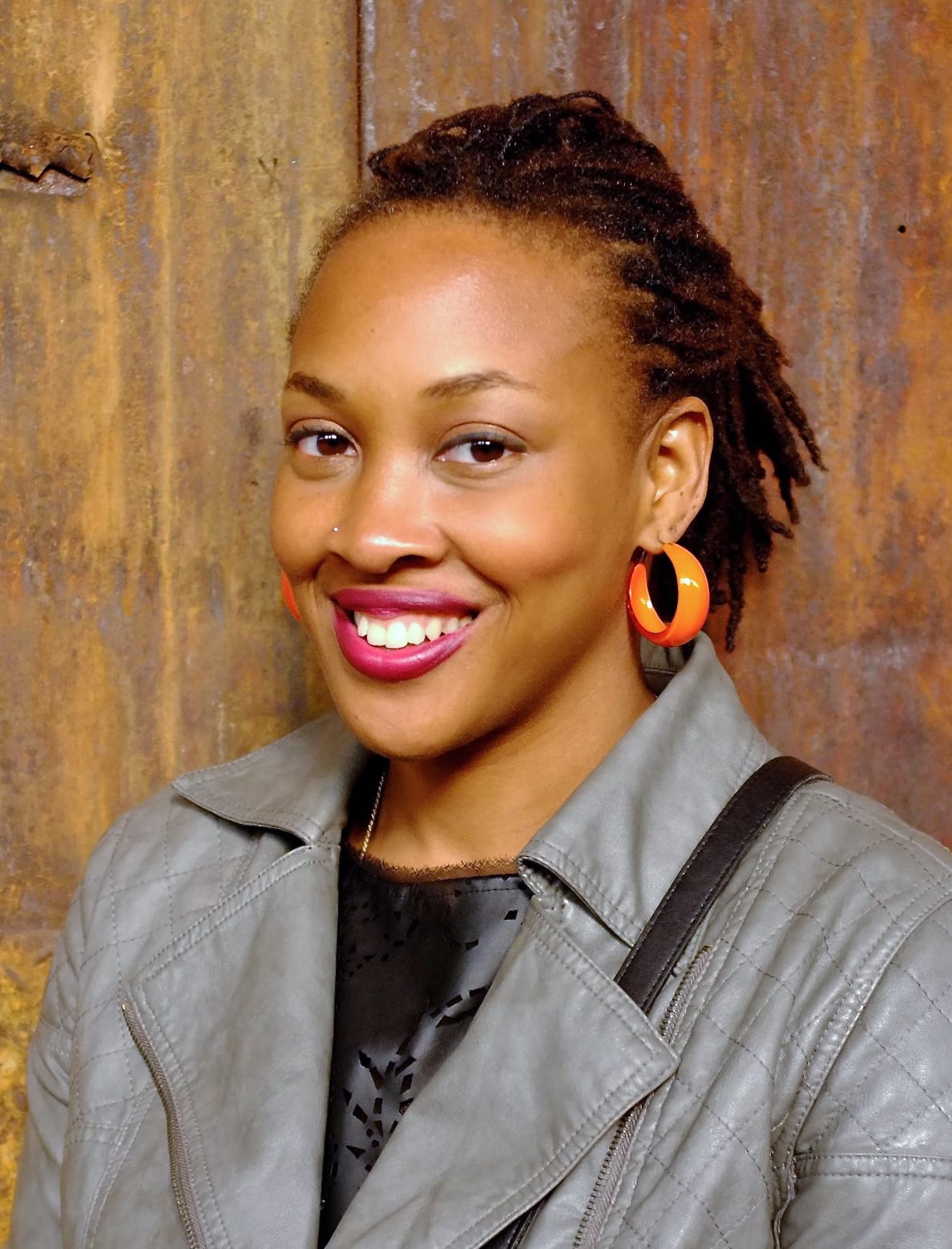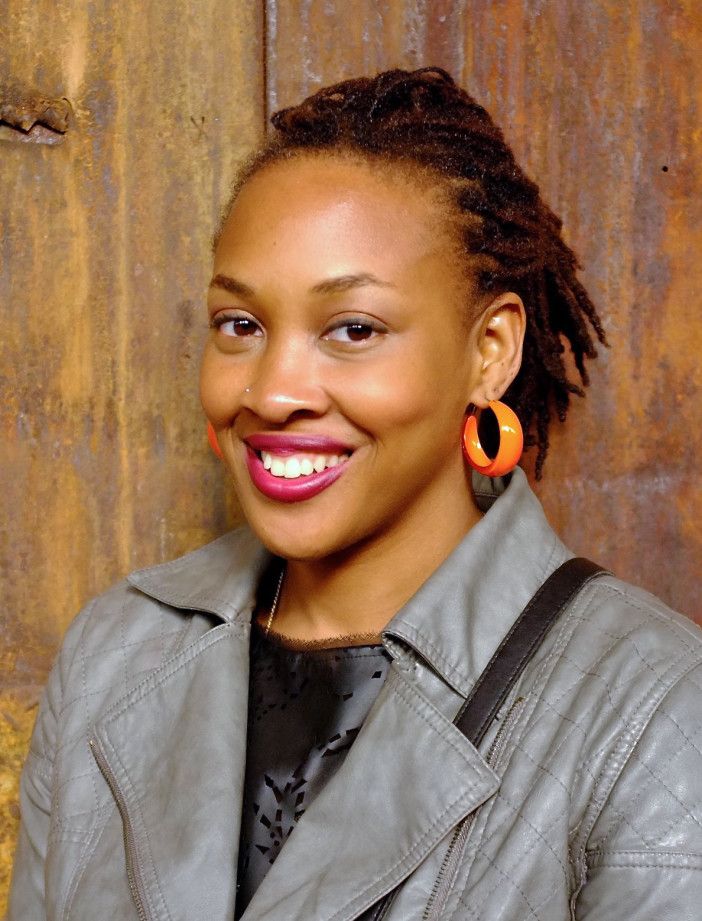Local Author Naomi Jackson Connects Brooklyn And The Caribbean In Her Writing


In local Naomi Jackson‘s new novel, The Star Side of Bird Hill, two girls spend the summer of 1989 with their grandmother in Barbados, and it’s Jackson’s deft descriptions of both people and places that earned her the accolade “a writer to watch” from Publisher’s Weekly. An unanticipated twist in the plot keeps the story compelling, but it’s Jackson’s talent for capturing character and experience that really elevates the book.
Jackson was born and raised in Flatbush, but she’ll be a visiting professor teaching creative writing at Oberlin in the spring. Before she leaves for the Midwest, she spent some time with us talking about Brooklyn and the world.
DPC: You write in The Star Side of Bird Hill, “In Brooklyn, Barbados was Bimshire, a jewel that Bajans turned over in their minds, a candy whose sweetness they sucked on whenever the bitter cold and darkness of life in America became too much to bear.” Do American-born children of the West Indian diaspora feel the same way, seeing the island as solace in hard times?
Naomi Jackson: I can only speak for my own experience as an American-born child of Caribbean parents. I saw the Caribbean when I was growing up as both a space of refuge and that somehow solved a mystery of who and how my parents are, and how they came to be that way. For me, it was less about solace than about a meaningful connection to the places that gave rise to my family and myself.
Although you’ve just published your first novel, you are fairly well-traveled for a young writer. You went to Williams College in Massachusetts, studied fiction at the Iowa Writers Workshop, spent some time in Philadelphia when you were finishing your book and traveled to South Africa on a Fulbright scholarship to earn your master’s in creative writing from the University of Cape Town. Were you homesick for Brooklyn they way your parents were for the islands while you were away? What did you miss most?
Yes, I both love to travel and suffer from terrible homesickness. I experienced it for the first time in college, and survived it then by FedEx packages of beef patties and Jamaican soft drinks that my parents sent me and coming home almost every weekend my freshman year. In South Africa, I missed my family and friends, and the food; I had the oddest experience of coming home and not remembering where things were, forgetting simple directions, like how to get to my sister’s house. In Iowa City, it was again family, friends, and food I missed; my parents sent me a care package that first fall that was a balm. It’s always the same things that I miss, and the solution is to make my home base here in Brooklyn.
For many Americans, the Caribbean is a singular destination, but in part because of the history of colonialism, the islands of the West Indies have distinct cultures and traditions. What is special about Barbados, where your mother’s family is from, and about your father’s homeland of Antigua?
Gosh, this is so hard to capture in just a few sentences! It’s true that each of the islands in the Caribbean is quite distinct. I’ve spent time in Barbados (motherland), Antigua (fatherland), and in Jamaica, where my stepmother’s from. I’m going to respectfully deflect this question because I wouldn’t know where to begin. Let’s just say that each of these places has a distinct flavor based on its colonial history, its food, its dialect, its culture, art and the personalities and dispositions of its people.
Living in Brooklyn, it’s easy to see the impact that Caribbean cultures have had on New York. The main characters of your novel are two Brooklyn teenagers spending the summer with their grandmother in Barbados. 16-year-old Dionne has a sense of fashion and style that is dazzling to the local girls on the island. What other ways has Brooklyn left its mark in the West Indies through the visits by the children of the generation that left the island for the U.S.?
I think that fashion is a big one; I remember being in Jamaica and seeing someone rocking a shearling coat, which was the style in New York City then, and not exactly appropriate for the tropical climate in Jamaica. The really interesting question though, is actually the impact that the West Indies has had on Brooklyn, New York, and American culture more generally. I know that American hip-hop was heavily influenced by Jamaican music when it was born in New York City in the 1970s. Rihanna (Barbados) and Nicki Minaj (Trinidad) have had a powerful influence on culture and music both in the United States and abroad.
When Sonny Fox, who was born in Brooklyn and went on to host a children’s television show in the 1960s, was reminiscing about the neighborhood, he told the Ditmas Park Corner, “Now you have all different names for it, but it was just Flatbush when I lived there.” I’m not sure it’s just old timers who feel that way. If you started out at the Kings Theater and went walking down Cortelyou Road toward Coney Island Avenue, would you feel like you were leaving Flatbush?
This is a fun question, and one I’ve been thinking about as I do research for my next book, which is set in Brooklyn. When I was growing up, Flatbush was all-encompassing. It’s only recently, probably in the last ten years, that I’ve heard people distinguishing neighborhoods – Prospect Lefferts Gardens, Ditmas Park, Victorian, or Vicky, Flatbush. I see how these distinctions can be sources of neighborhood pride as well as harbingers of gentrification. It’s still all Flatbush to me.
I know you are sometimes on Cortelyou to visit Third Root to practice yoga. What else brings you to “the Ditmas side of Flatbush”? What are your favorite spots in the neighborhood? Any secret places to curl up with a good book?
Third Root is awesome. I was a member of my beloved Flatbush Food Co-op for years, and will likely join again. Café Madeline makes a good cup of coffee, though I am astounded (and admittedly a bit overwhelmed) to see how much the café has expanded, and how many people work, chat, and hang out there. My other favorite neighborhood spots are the homes of my friends who live in Ditmas.
You’ve mentioned the inspiration of Edwidge Danticat, the Haitian-American author whose novel Breath, Eyes, Memory is a classic account of a West-Indian teenager growing up in Brooklyn. What other writers have influenced you?
Edwidge Danticat is a guiding light, and I’ve been lucky enough to see her a few times this year. Also, Junot Diaz, Jamaica Kincaid, Tiphanie Yanique, and some others we talk about throughout this interview.
Your coverage of this year’s Bocas Lit Fest in Trinidad highlighted the number of contemporary Anglophone Caribbean authors working in sci-fi and speculative fiction, helping widen the genre beyond robots, rocket ships and rayguns. What do you think attracts West Indian authors to science fiction, and what are some of the new elements their voices bring to it?
I think that the existence of African-based spiritual traditions in the Caribbean (obeah, vodun, Santeria, etc.) predispose my people to believing in magic and the paranormal, and there are speculative fiction elements even in some of the realist Caribbean novels I read. I’ll be exploring this in depth in a class I’ll be teaching at Oberlin next spring, so I’ll have to report back on this one.
The Jamaican novelist Marlon James, who provided an appreciative blurb for your book, just won the Man Booker Prize for A Brief History of Seven Killings. It must be exciting to see a colleague having such success. The book also won the OCM Bocas Prize for Caribbean Literature. Did you see James at the Lit Fest?
I’m a huge fan of Marlon James’s work, and was thrilled to celebrate his winning the Man Booker Prize; I don’t think the shine will wear off for some time. I didn’t see James at the Lit Fest this past year, but I did spy him at Brooklyn Book Festival, and will hopefully see him again soon. I appeared on Al Jazeera America’s The Stream with James and some fellow writers to talk about A Brief History of Seven Killings.
You wrote a lovely appreciation of Barbadian artist Sheena Rose, whose painting “Too Much Makeup” was used as the cover for The Star Side of Bird Hill. Do you often take inspiration as a writer from artists working in other fields, like art, music, or film?
I love to listen to music and to watch films; when things are going well, I try to see at least one or more movies each week. I’m lucky enough to have many visual artists as close friends, and I certainly take inspiration from what they do. I wrote a bit about art and its influence on my work for Poets & Writers online portal.
Brooklyn’s been the setting for many great novels, including Fortress of Solitude, Tropic of Capricorn and Paule Marshall’s Brown Girl, Brownstones, about a Bajan family living in Bed-Stuy in the 30s. What are your favorite Brooklyn fictions?
Well, you just stole one of my favorites, Paule Marshall’s Brown Girl, Brownstones. I love that book as well as June Jordan’s memoir, Poet: A Soldier’s Childhood. There’s also Sophie’s Choice and A Tree Grows in Brooklyn.
The Star Side of Bird Hill has been garnering great reviews, and I know you’ve been out helping readers connect with the book—we met earlier this year at the Brooklyn Book Festival, where you joined a panel aimed at helping book clubs find good reads for the coming year. You also recently did a reading as part of the Brooklyn Public Library’s Bookish series. Have you had time to start working on a new book? What’s next for you?
It’s been so much fun to travel and connect with readers both around Brooklyn and across the country. Now that I’m mostly done with touring, I’m focused on getting some rest and working on my next novel, Behind God’s Back, a historical novel focused on three generations of Caribbean women in Brooklyn from the 1930s to the 2000s, and a screenplay adaptation of one of my short stories, “Ladies.”
Chris Farrell organizes the 21st Century Book Club that meets at the Cortelyou Branch library on the third Tuesday of each month. For more informaiton, you can email fictioncentury21@gmail.com.




